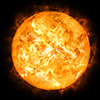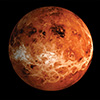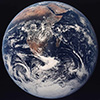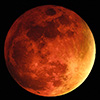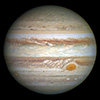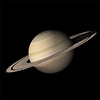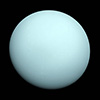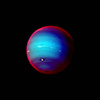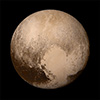Planet Map
There are nine planets in the Solar System, which are in increasing distance from the Sun:
- ☿ Mercury
- ♀ Venus
- ⊕ Earth
- ♂ Mars
- ♃ Jupiter
- ♄ Saturn
- ♅ Uranus
- ♆ Neptune
- ♇ Pluto
Jupiter is the largest, at 318 Earth masses, whereas Mercury is the smallest, at 0.055 Earth masses. The planets of the Solar System can be divided into categories based on their composition:
Terrestrials: Planets that are similar to Earth, with bodies largely composed of rock: Mercury, Venus, Earth and Mars. At 0.055 Earth masses, Mercury is the smallest terrestrial planet (and smallest planet) in the Solar System. Earth is the largest terrestrial planet.
Giant planets (Jovians): Massive planets significantly more massive than the terrestrials: Jupiter, Saturn, Uranus, Neptune.
Gas giants, Jupiter and Saturn, are giant planets primarily composed of hydrogen and helium and are the most massive planets in the Solar System. Jupiter, at 318 Earth masses, is the largest planet in the Solar System, and Saturn is one third as massive, at 95 Earth masses.
Ice giants, Uranus and Neptune, are primarily composed of low-boiling-point materials such as water, methane, and ammonia, with thick atmospheres of hydrogen and helium. They have a significantly lower mass than the gas giants (only 14 and 17 Earth masses).
